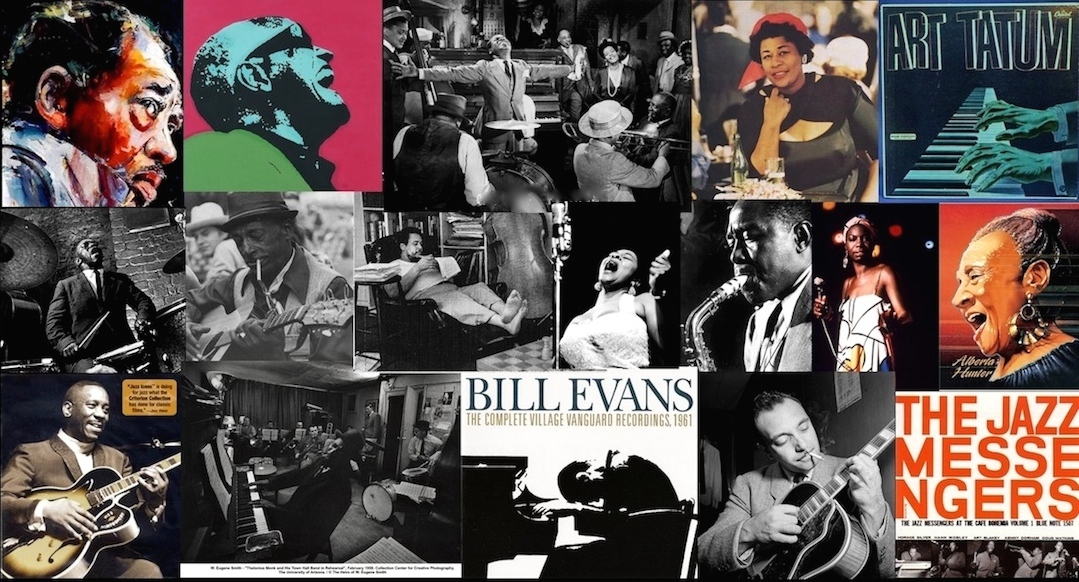
Hank Mobley – Saxophonist
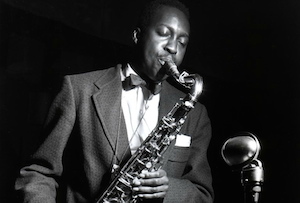 Mobley began playing tenor saxophone as a New Jersey teenager and gained experience in the bands of Max Roach and Dizzy Gillespie and was a founding member of the original Jazz Messengers. Mobley helped inaugurate the hard bop movement: jazz that balanced sophistication and soulfulness, complexity and earthy swing, and whose loose structure allowed for extended improvisations. Mobley’s solo lines were full of intricate rhythmic patterns that were delivered with spot-on precision, and he was no slouch harmonically either.
Mobley began playing tenor saxophone as a New Jersey teenager and gained experience in the bands of Max Roach and Dizzy Gillespie and was a founding member of the original Jazz Messengers. Mobley helped inaugurate the hard bop movement: jazz that balanced sophistication and soulfulness, complexity and earthy swing, and whose loose structure allowed for extended improvisations. Mobley’s solo lines were full of intricate rhythmic patterns that were delivered with spot-on precision, and he was no slouch harmonically either.
Hank Mobley played a sweet tenor. He could play – and often played – r&b-tinged jazz; indeed, along with trumpeter Lee Morgan he became one of the foremost practitioners of this paleo-fusion in the Fifties and Sixties. But he was not a hooting, booting, keening, screaming r&b artist. Instead, he built his solos with an easygoing inexorability.
Kenny Dorham – Trumpeter
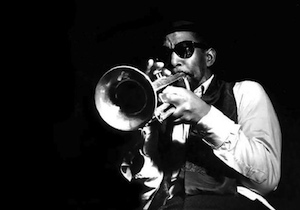 Dorham possessed a rare, soft and vulnerable sound that is soothing and instantly identifiable. Eschewing the typical trumpeter’s showmanship and flashiness, Dorham instead relied on his economical melodic logic in constructing poetic, lyrical improvisations with meaningful beginnings, middles, and ends.
Dorham possessed a rare, soft and vulnerable sound that is soothing and instantly identifiable. Eschewing the typical trumpeter’s showmanship and flashiness, Dorham instead relied on his economical melodic logic in constructing poetic, lyrical improvisations with meaningful beginnings, middles, and ends.
At mid-tempos, Dorham distinctly articulated an exaggerated staccato swing feel, greatly contrasting his double-timed legato phrases. On ballads, Dorham would not stray far from the melody, his minimalist approach exposing the innate beauty of each melody he touched. His idiosyncratic use of grace notes, varied attacks on single notes, such as scooping underneath or bending above the pitch, and stuttering repetitions of notes were some of the personal nuances that decorated his deceptively complex improvisations.
Art Tatum – Pianist
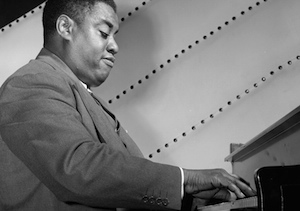 Art Tatum was among the most extraordinary of all jazz musicians, a pianist with wondrous technique who could not only play ridiculously rapid lines with both hands, but was harmonically 30 years ahead of his time; all pianists have to deal to a certain extent with Tatum’s innovations in order to be taken seriously. Able to play stride, swing, and boogie-woogie with speed and complexity that could only previously be imagined, Tatum’s quick reflexes and boundless imagination kept his improvisations filled with fresh (and sometimes futuristic) ideas that put him way ahead of his contemporaries.
Art Tatum was among the most extraordinary of all jazz musicians, a pianist with wondrous technique who could not only play ridiculously rapid lines with both hands, but was harmonically 30 years ahead of his time; all pianists have to deal to a certain extent with Tatum’s innovations in order to be taken seriously. Able to play stride, swing, and boogie-woogie with speed and complexity that could only previously be imagined, Tatum’s quick reflexes and boundless imagination kept his improvisations filled with fresh (and sometimes futuristic) ideas that put him way ahead of his contemporaries.
Tatum was really known for the way that he explored harmonic complexities and unusual chord progressions. When improvising, Tatum would often insert totally new chord sequences (occasionally with a chord on each beat) into one or two measures.
Sonny Stitt – Saxophonist
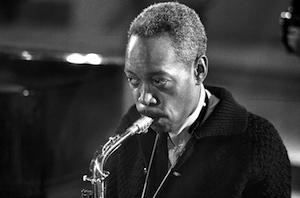 Sonny Stitt made more records as a leader than any other jazz instrumentatlist. Although eclipsed in his era by the extraordinary attention focused on Charlie Parker, Stitt was highly admired by both fans and musicians. Equipped with magnificent technique and iron chops, and gifted with an innate ability swing, he could turn on the music seemingly at will.
Sonny Stitt made more records as a leader than any other jazz instrumentatlist. Although eclipsed in his era by the extraordinary attention focused on Charlie Parker, Stitt was highly admired by both fans and musicians. Equipped with magnificent technique and iron chops, and gifted with an innate ability swing, he could turn on the music seemingly at will.
Stitt could rip through an up-tempo bebop stanza, then turn around and play a shivering, captivating ballad. Stitt was a virtuoso on the horn and relished competition on the bandstand. Stitt had the qualities essential to a tenor battler; he was implacable, indefatigable and inventive. Although his playing was at first heavily inspired by Charlie Parker and Lester Young, Stitt eventually developed his own style, one which influenced John Coltrane.
Carl Fontana – Trombonist
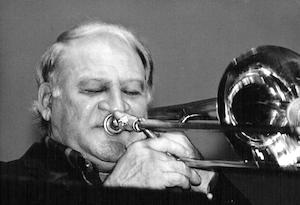 Carl Fontana was one of the most talented and innovative trombonists of his generation. He became known as a lyrical, technically brilliant and inventive soloist. His fluid style was quite different from the bebop staccato of his great contemporaries, such as J.J. Johnson and Frank Rosolino.
Carl Fontana was one of the most talented and innovative trombonists of his generation. He became known as a lyrical, technically brilliant and inventive soloist. His fluid style was quite different from the bebop staccato of his great contemporaries, such as J.J. Johnson and Frank Rosolino.
Fontana was also greatly admired for his mastery of the “Doodle Tonguing” technique, a technique he developed for playing rapid-fire passages with technical brilliance in double-time phrasing. This skill allowed Fontana to smoothly execute “runs of notes” at speeds many had not previously considered possible to achieve on a slide trombone. “I don’t think I ever heard Carl play a bad solo,” Scott Whitfield maintains,. “He definitely did not have a big ego and he did not have a star trip going on.
Wynton Kelly – Pianist
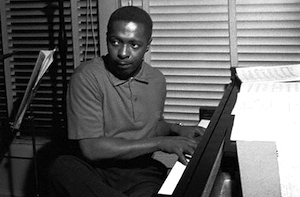 Wynton Kelly, who was both an elegant piano soloist with a rhythmically infectious solo style in which he combined boppish lines with a great feeling for the blues as well as a particularly accomplished accompanist, gifted with perfect pitch and a highly individual block chording style. Kelly’s work was always highly melodic, especially in his ballad performances, while an irresistible sense of swing informed his mid and up-tempo performances.
Wynton Kelly, who was both an elegant piano soloist with a rhythmically infectious solo style in which he combined boppish lines with a great feeling for the blues as well as a particularly accomplished accompanist, gifted with perfect pitch and a highly individual block chording style. Kelly’s work was always highly melodic, especially in his ballad performances, while an irresistible sense of swing informed his mid and up-tempo performances.
Kelly was one of the most prolific sideman pianists of his era, performing on scores of jazz albums, and led albums under his own name, as well as being a superb accompanist and a distinctive soloist. A fundamentally unobtrusive pianist who liked above all to swing, Wynton Kelly nevertheless became many people’s ideal pianist during the 60s. A solid mainstream player grounded in the blues, he could make anything he played bounce.
Art Farmer – Trumpet / Flugelhorn
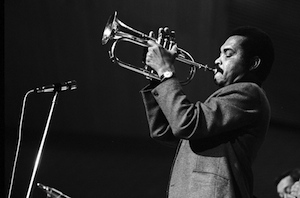 A highly melodic soloist, with inventive turns of phase and a frequently elegiac approach to his music. Study of his work over several decades reveals an artist of considerable emotional depths which he plumbed more and more as the years passed. In a quiet, unassuming manner, which reflected his personality, Farmer proved hard to pigeonhole.
A highly melodic soloist, with inventive turns of phase and a frequently elegiac approach to his music. Study of his work over several decades reveals an artist of considerable emotional depths which he plumbed more and more as the years passed. In a quiet, unassuming manner, which reflected his personality, Farmer proved hard to pigeonhole.
Descriptions of Farmer’s playing style typically stress his lyricism and the warmth of his sound. His playing had “a sweetly lyrical tone and a melodic approach to phrasing, neither of which minimized his capacity to produce rhythmically swinging phrases. Farmer avoided the bright, penetrating sound of orthodox trumpet playing and was influenced by the more reserved articulation of Miles Davis and Kenny Dorham, and that, although he could seem more restrained than Davis or Lee Morgan, Farmer was in his way a true original.
Bobby Hutcherson – Vibraphonist
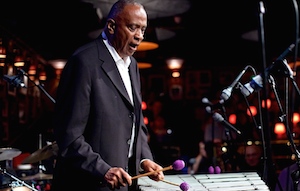 Easily one of jazz’s greatest vibraphonists, Hutcherson helped modernize his instrument by redefining what could be done with it – sonically, technically, melodically, and emotionally. In the process, he became one of the defining voices in the so-called “new thing” portion of Blue Note’s glorious ’60s roster. Hutcherson gradually moved into a more mainstream, modal post-bop style that, if not as adventurous as his early work, still maintained his reputation as one of the most advanced masters of his instrument.
Easily one of jazz’s greatest vibraphonists, Hutcherson helped modernize his instrument by redefining what could be done with it – sonically, technically, melodically, and emotionally. In the process, he became one of the defining voices in the so-called “new thing” portion of Blue Note’s glorious ’60s roster. Hutcherson gradually moved into a more mainstream, modal post-bop style that, if not as adventurous as his early work, still maintained his reputation as one of the most advanced masters of his instrument.
Hutcherson’s work remains entirely compelling. He brings something special every time he plays. In recent years, it’s especially noticeable on his recordings as a sideman. If he doesn’t play on a particular track, you miss him. When he does play, everyone sounds better.
Michel Petrucciani – Jazz Pianist
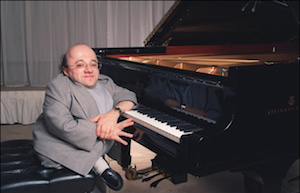 Petrucciani’s style is most frequently compared to Bill Evans and Keith Jarrett for his lyricism and Oscar Peterson for his virtuosity. His playing was often quite dramatic, as well as loose and playful in a rhythm section, and gave attention to a strong articulation of the melody.
Petrucciani’s style is most frequently compared to Bill Evans and Keith Jarrett for his lyricism and Oscar Peterson for his virtuosity. His playing was often quite dramatic, as well as loose and playful in a rhythm section, and gave attention to a strong articulation of the melody.
Petrucciani was one of the most passionate and extrovert of soloists and the aggressive hurdling of his up-tempo work established an exciting bond with his audience. His interest was primarily in simply playing; he spent little time reharmonizing or arranging. “When I play, I play with my heart and my head and my spirit… I don’t play to people’s heads, but to their hearts.”
Joe Henderson – Jazz Saxophonist
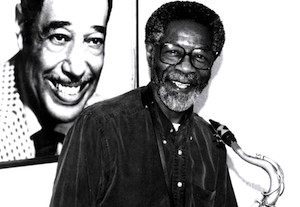 Jazz saxophonist and composer Joe Henderson could best be described as a renaissance man. Creating a style unique from the dominant saxophonists of his early career -namely John Coltrane and Sonny Rollins – Henderson became the consummate leader and sideman. His name has become synonymous with power and grace on the tenor saxophone, and has long been revered in musical circles for his distinctive sound and powers of invention. Although Henderson’s earliest recordings were marked by a strong hard-bop influence, his playing encompassed not only the bebop tradition, but rhythm and blues, latin, and avant-garde as well.
Jazz saxophonist and composer Joe Henderson could best be described as a renaissance man. Creating a style unique from the dominant saxophonists of his early career -namely John Coltrane and Sonny Rollins – Henderson became the consummate leader and sideman. His name has become synonymous with power and grace on the tenor saxophone, and has long been revered in musical circles for his distinctive sound and powers of invention. Although Henderson’s earliest recordings were marked by a strong hard-bop influence, his playing encompassed not only the bebop tradition, but rhythm and blues, latin, and avant-garde as well.
Henderson has had a remarkably consistent career, carving out his own reputation through technical excellence, songwriting ability, and a stunning diversity that made him a sought-after sideman early in his career.
Gene Ammons – Jazz Saxophonist
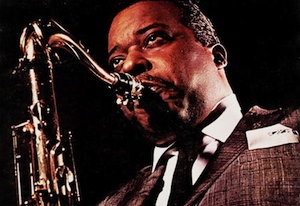 Gene Ammons, who had a huge and immediately recognizable and captivating tone on tenor, had the natural ability to take a tune and make it his own. He was a flexible and technically proficient player who could play in many musical idioms as well as being an incredible balladeer. He proved to be very much his own man, developing a distinctive, warm sound that nevertheless fitted well into the hard-edged playing of his colleagues.
Gene Ammons, who had a huge and immediately recognizable and captivating tone on tenor, had the natural ability to take a tune and make it his own. He was a flexible and technically proficient player who could play in many musical idioms as well as being an incredible balladeer. He proved to be very much his own man, developing a distinctive, warm sound that nevertheless fitted well into the hard-edged playing of his colleagues.
Ammons played a rich, soulful music overlaid with an aggressive attack – a style that moved him towards the outer edges of the bop tradition yet never quite slipped over into fully fledged soul or R&B. Ammons enjoyed considerable success thanks in part to his enthusiastic playing and the concurrent popularity of jazz soul music throughout the 60s.
Elvin Jones – Jazz Drummer
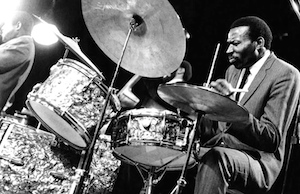 Many music critics regard Elvin Jones as the most influential drummer in the history of jazz. His revolutionary style transformed the drums as a traditional time-keeping instrument. Employing a multilayered, rhythmic approach, Jones created a dynamic interplay with soloists unprecedented by earlier drum stylists. Early in his career, he performed with such jazzmen as Charles Mingus, Bud Powell, Sonny Rollins, and Miles Davis.
Many music critics regard Elvin Jones as the most influential drummer in the history of jazz. His revolutionary style transformed the drums as a traditional time-keeping instrument. Employing a multilayered, rhythmic approach, Jones created a dynamic interplay with soloists unprecedented by earlier drum stylists. Early in his career, he performed with such jazzmen as Charles Mingus, Bud Powell, Sonny Rollins, and Miles Davis.
However, it wasn’t until he joined the John Coltrane Quartet in 1960 that Jones began to attract international recognition. During his six years with Coltrane’s group, Jones contributed to some of the most celebrated recordings in the history of modern jazz. For over four decades, his innovative rhythmic technique has served as a catalyst for drummers seeking greater improvisational freedom.
Lenny Breau – Jazz Guitarist
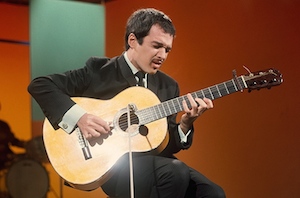 Lenny Breau was a guitarist with staggering technique and a mind for innovation; he played with an evocative style that effortlessly jumped between genres. Breau used a fingerstyle (as opposed to a plectrum style) that opened up melodic and harmonic possibilities not previously explored by jazz guitarists.
Lenny Breau was a guitarist with staggering technique and a mind for innovation; he played with an evocative style that effortlessly jumped between genres. Breau used a fingerstyle (as opposed to a plectrum style) that opened up melodic and harmonic possibilities not previously explored by jazz guitarists.
Breau’s fully matured technique was a combination of Atkins’ and Travis’ fingerpicking and Sabicas-influenced flamenco, highlighted by extraordinary right-hand independence and flurries of artificial harmonics. His harmonic sensibilities were a combination of his country roots, classical, modal, Indian, and especially jazz, particularly the work of pianist Bill Evans. Beyond Breau’s breath-taking skill, he was equally known for his gentle nature and warm smile.
Rahsaan Roland Kirk – Jazz Multi-Instrumentalist
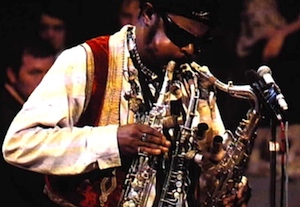 Kirk was an immensely creative artist; perhaps no improvising saxophonist has ever possessed a more comprehensive technique — one that covered every aspect of jazz, from Dixieland to free — and perhaps no other jazz musician has ever been more spontaneously inventive. His skills in constructing a solo are of particular note. Kirk had the ability to pace, shape, and elevate his improvisations to an extraordinary degree. Just when it appeared he could not raise the intensity level any higher, he always seemed able to turn it up yet another notch.
Kirk was an immensely creative artist; perhaps no improvising saxophonist has ever possessed a more comprehensive technique — one that covered every aspect of jazz, from Dixieland to free — and perhaps no other jazz musician has ever been more spontaneously inventive. His skills in constructing a solo are of particular note. Kirk had the ability to pace, shape, and elevate his improvisations to an extraordinary degree. Just when it appeared he could not raise the intensity level any higher, he always seemed able to turn it up yet another notch.
Arguably the one of the most exciting saxophone soloist in jazz history, Kirk was a post-modernist before that term even existed. Kirk played the continuum of jazz tradition as an instrument unto itself; he felt little compunction about mixing and matching elements from the music’s history, and his concoctions usually seemed natural, if not inevitable.
Lee Morgan – Jazz Trumpeter
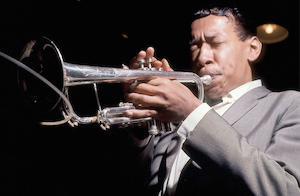 Lee Morgan was one of hard bop’s greatest trumpeters, and indeed one of the finest of the ’60s. An all-around master of his instrument modeled after Clifford Brown, Morgan boasted an effortless, virtuosic technique and a full, supple, muscular tone that was just as powerful in the high register. His playing was always emotionally charged, regardless of the specific mood: cocky and exuberant on up-tempo groovers, blistering on bop-oriented technical showcases, sweet and sensitive on ballads.
Lee Morgan was one of hard bop’s greatest trumpeters, and indeed one of the finest of the ’60s. An all-around master of his instrument modeled after Clifford Brown, Morgan boasted an effortless, virtuosic technique and a full, supple, muscular tone that was just as powerful in the high register. His playing was always emotionally charged, regardless of the specific mood: cocky and exuberant on up-tempo groovers, blistering on bop-oriented technical showcases, sweet and sensitive on ballads.
Toward the end of his career, Morgan was increasingly moving into modal music and free bop, hinting at the avant-garde but remaining grounded in tradition.
Milt Jackson – Jazz Vibraphonist
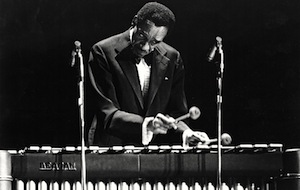 Jackson was one of the first vibraphonists to master the bop style, and is generally regarded as one of the finest performers on his instrument in the history of jazz. His improvisations exhibit great rhythmic variety, with sudden outbursts of short notes often adjoining languid, sustained phrases. He also utilizes a wide range of dynamics to highly expressive ends. His great control of rhythm and dynamics is clearest in his masterly improvisations at slow tempos, but he also has an affinity for the 12-bar blues, and has recorded many excellent blues solos.
Jackson was one of the first vibraphonists to master the bop style, and is generally regarded as one of the finest performers on his instrument in the history of jazz. His improvisations exhibit great rhythmic variety, with sudden outbursts of short notes often adjoining languid, sustained phrases. He also utilizes a wide range of dynamics to highly expressive ends. His great control of rhythm and dynamics is clearest in his masterly improvisations at slow tempos, but he also has an affinity for the 12-bar blues, and has recorded many excellent blues solos.
Jackson brought to his musical settings a highly developed sensitivity to balance and contrast, which made much of his playing with the MJQ muted when compared with his aggressive work in his own groups.
Harold Mabern – Jazz Pianist
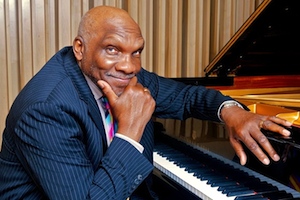 Harold Mabern, one of jazz’s most enduring and dazzlingly skilled pianists, was born in Memphis, a city that produced saxophonists George Coleman and Charles Lloyd, pianist Phineas Newborn Jr. and trumpeter Booker Little. He was an unsung hero of the 1960s hardbop scene, performing and recording with many of its finest artists, and only in recent years has he begun to garner appreciation for his long-running legacy in jazz and the understated power of his talent.
Harold Mabern, one of jazz’s most enduring and dazzlingly skilled pianists, was born in Memphis, a city that produced saxophonists George Coleman and Charles Lloyd, pianist Phineas Newborn Jr. and trumpeter Booker Little. He was an unsung hero of the 1960s hardbop scene, performing and recording with many of its finest artists, and only in recent years has he begun to garner appreciation for his long-running legacy in jazz and the understated power of his talent.
During his over half-century on the scene as sideman and leader, he has played and recorded with such greats as Lee Morgan, Sonny Rollins, Hank Mobley, Freddie Hubbard and Miles Davis, just to name a few. “I was never concerned with being a leader, I just always wanted to be the best sideman I could be.”
Stanley Turrentine – Jazz Saxophonist
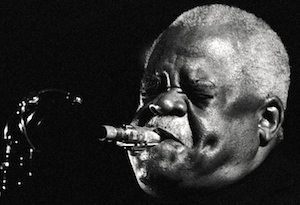 A legend of the tenor saxophone, Stanley Turrentine was renowned for his distinctively thick, rippling tone, an earthy grounding in the blues, and his ability to work a groove with soul and imagination. Turrentine recorded in a wide variety of settings, but was best-known for his Blue Note soul-jazz jams of the ’60s, and also underwent a popular fusion makeover in the early ’70s. “The Sugar Man” or the original ”Mr. T” found inspiration in the blues and turned it into a hugely successful career.
A legend of the tenor saxophone, Stanley Turrentine was renowned for his distinctively thick, rippling tone, an earthy grounding in the blues, and his ability to work a groove with soul and imagination. Turrentine recorded in a wide variety of settings, but was best-known for his Blue Note soul-jazz jams of the ’60s, and also underwent a popular fusion makeover in the early ’70s. “The Sugar Man” or the original ”Mr. T” found inspiration in the blues and turned it into a hugely successful career.
A consummate musician who learned his craft through disparate experiences and influences, Turrentine received his only formal musical training during his military stint in the mid-’50s. In 1959, he jumped from the frying pan into the fire when he left the military and went straight into the band of the great drummer Max Roach.
Clifford Brown – Jazz Trumpeter
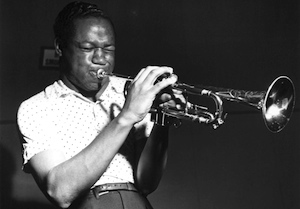 Clifford Brown was influenced and encouraged by Fats Navarro, sharing Navarro’s virtuosic technique and brilliance of invention. His sound was warm and round, and notably consistent across the full range of the instrument. He could articulate every note, even at very fast tempos which seemed to present no difficulty to him; this served to enhance the impression of his speed of execution. His sense of harmony was highly developed, enabling him to deliver bold statements through complex harmonic progressions (chord changes), and embodying the linear, “algebraic” terms of bebop harmony.
Clifford Brown was influenced and encouraged by Fats Navarro, sharing Navarro’s virtuosic technique and brilliance of invention. His sound was warm and round, and notably consistent across the full range of the instrument. He could articulate every note, even at very fast tempos which seemed to present no difficulty to him; this served to enhance the impression of his speed of execution. His sense of harmony was highly developed, enabling him to deliver bold statements through complex harmonic progressions (chord changes), and embodying the linear, “algebraic” terms of bebop harmony.
Brown’s phenomenal playing, as well as his straight and narrow lifestyle, earned him celebrity in the jazz world at a very young age. His sobriety was uncommon in jazz at the time, and his focus and discipline presented a contrast from the sort of drug-fueled life that the iconic Charlie Parker espoused.
Red Garland – Jazz Pianist
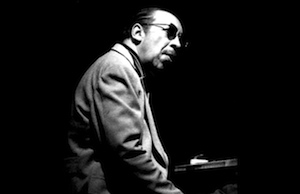 Red Garland became widely known for his distinctive block chord approach to melody playing, which has been widely imitated. In a block chord style, both hands sound on every note of the melody. There is no separation between right melody and left hand comping (accompanying). It is a device which produces a lot of sound out of the piano, so is ideally suited as the climax of a solo.
Red Garland became widely known for his distinctive block chord approach to melody playing, which has been widely imitated. In a block chord style, both hands sound on every note of the melody. There is no separation between right melody and left hand comping (accompanying). It is a device which produces a lot of sound out of the piano, so is ideally suited as the climax of a solo.
His impeccable rhythm fueled perfect single-note melodic lines. In particular he was a master at extracting a special poignancy from minor blues. An economical player who chose his notes wisely, he was also an adept at spontaneous counterpoint, and he knew how to build.
Walter Bishop Jr – Jazz Pianist
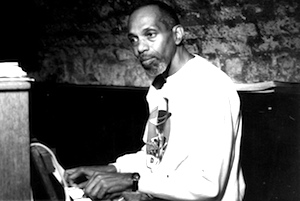 A pianist during the bebop era, he played and recorded with many jazz greats, including Art Blakey, Charlie Parker, Blue Mitchell, Curtis Fuller, Oscar Pettiford, John Coltrane and Miles Davis. In the early 1960s he also led his own trio with Jimmy Garrison and G. T. Hogan.
A pianist during the bebop era, he played and recorded with many jazz greats, including Art Blakey, Charlie Parker, Blue Mitchell, Curtis Fuller, Oscar Pettiford, John Coltrane and Miles Davis. In the early 1960s he also led his own trio with Jimmy Garrison and G. T. Hogan.
Walter Bishop, Jr. was a valuable utility pianist on many a modern jazz session during the bebop era, remaining an active performer until his death at the age of 70 in early 1998. The son of composer Walter Bishop, Sr., he grew up in Harlem’s Sugar Hill area, and as a teen counted among his friends Sonny Rollins, Kenny Drew, and Art Taylor; acknowledging Art Tatum, Bud Powell, and Nat King Cole as important influences.
